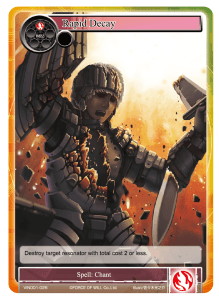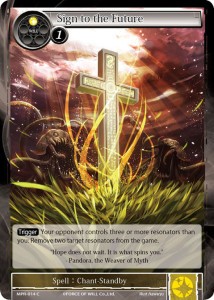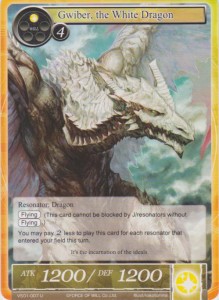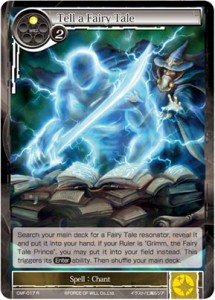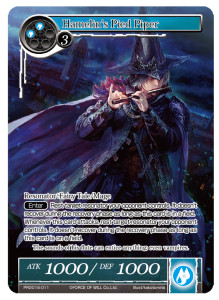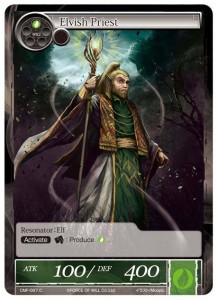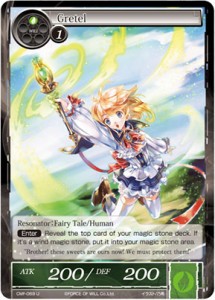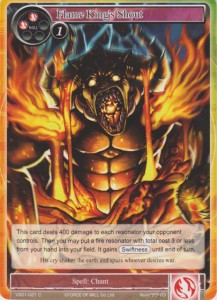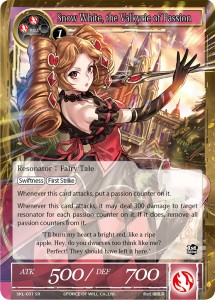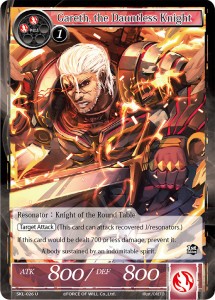Gaining Parity in Force of Will TCG
Recently I’ve been playing a paper TCG called Force of Will. My most recent achievement is placing 4th at ARG Nationals.
Today I’m discussing a deckbuilding concept called Gaining Parity. Gaining parity is when you offset a disadvantageous situation to create a game state that is either neutral or advantageous. It’s important because there is a related concept called tempo that automatically establishes a disadvantage for the player going second. If you’ve played at least a few FoW games, you know how it feels to be behind on curve when you lose the die roll – your opponent has a tempo advantage. To counteract this, you need to gain parity.
Trading Up (Efficiency)
Trading up means investing less resources than your opponent for an equal result. For example, if you play a Rapid Decay to destroy a Lancelot, you have invested a card and 1 will to destroy a card that cost 2 will to play. Playing Sign to the Future removes two resonators from the game if your opponent controls at least three more than you, which means you spent 1 card and 2 will to remove 2 cards that cost at least 2 will (but often times more). Trading up is a common way to gain parity, as it means your will is being used more efficiently and offsetting the fact that your opponent is ahead on the curve because they are playing inefficiently.
An example turn 2 to help drive the point: Playing a one-drop like Perceval, grabbing a Lancelot, and then using Rapid Decay to destroy your opponent’s Lancelot. Assuming you played a resonator on turn 1 also, the resulting board state is 2 resonators in play for you and up to 1 resonator in play for your opponent. You have gained parity by being more will-efficient and are even up on resonators until your opponent conducts his turn 3.
Bomb Them First (Pressure)
Sometimes you can skip gaining parity and seize advantage by putting a huge threat on board (a bomb) before your opponent. Gwiber is a 12/12 flying dragon commonly played for the low cost of 1. Tell a Fairy Tale often grabs Hamelin’s Pied Paper, a 10/10 body (larger than almost anything else that can come out by turn 3) that locks down an enemy resonator. Playing bombs creates pressure, forcing your opponent to react defensively and use his will to remove threats instead of advancing his gameplan. You also gain advantage if your opponent spends more resources to remove your bomb than it cost for you to play it. If your opponent spends 2 will to Stoning to Death your Gwiber, your opponent invested 1 card and 2 will to remove your 1 card that cost 1 will. Similar to the concept of trading up, your opponent is losing the ability to maintain parity by being less will efficient.
If you play a lot of limited, this is the most common method of gaining parity in that format since good removal is hard to come by in sealed/draft while ‘bomb’ resonators are more prevalent.
Ramp (Must Be Followed By A Threat, Removal, or Clock)
What if you are the one leading the curve? Cards like Elvish Priest and Gretel do exactly that, although you often spend a turn to play them so your opponent still has the tempo advantage in the short term. It’s important to follow ramp with either a threat that utilizes the will advantage, a removal spell to actually regain lost tempo, or a ‘clock’ if your deck has one (such as Vlad Tepes). Ramping leads to mid-to-late game strategies and the ramping player still needs to stabilize or race.
I define stabilize as reaching a game state where it is no longer advantageous for your opponent to try to damage you. Others may have different definitions and it often depends on what kind of deck you are playing against, but this is a good general explanation. Race is a related concept I define as ‘who will win first if both players aim to damage each other.’ Stabilizing is most commonly done by using either of the concepts above (trading up, bomb them first) or just playing removal, even if it does equal collateral damage. Note that my definition of stabilizing does not mean you are in an advantageous position per se, but rather that you are not in a disadvantageous situation.
Force of Will Is About Combining Concepts
The concepts listed above are not independent. Tell a Fairy Tale into Hamelin’s Pied Piper is not just a bomb, but also a tempo offset because an enemy resonator gets locked down. Gaining or breaking parity often requires executing a combination of different concepts. If you play a Rapid Decay and a 1-cost resonator but then lose your board to a turn 3 Flame King’s Shout, you’re not only still behind on the curve but also likely have no board. To establish parity from this point, you will need to relieve yourself of enemy pressure and present a threat of some kind to offset still being behind on curve. Sometimes this is as simple as casting your own Flame King’s Shout into Snow White, the Valkyrie of Passion / Gareth, the Dauntless Knight, but other times it may involve several cards over several turns or perhaps racing them with a Vlad Tepes.
Most Force of Will games can be generalized as two players fighting over who can break parity the longest, with the winner being decided once one player is behind for too long (excepting OTK combos and comeback strategies). In order to maximize chances of winning on the draw, it’s important for players to keep in mind the concept of gaining parity when deckbuilding.


